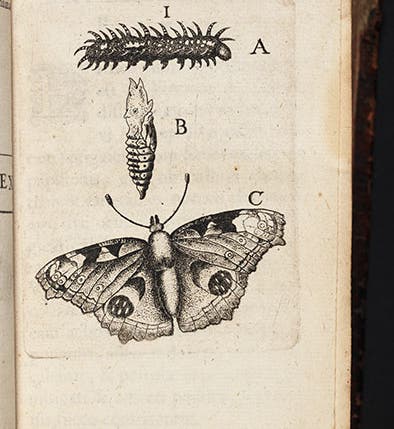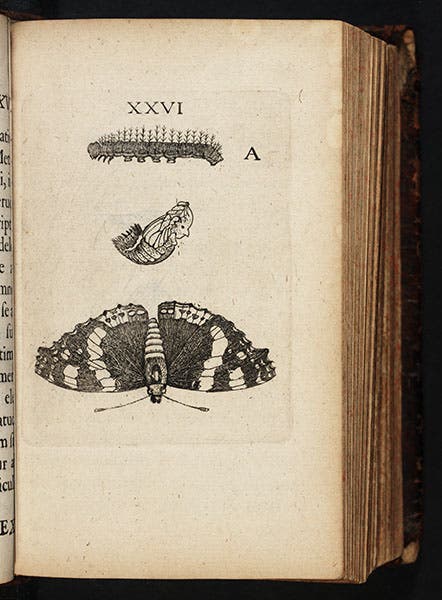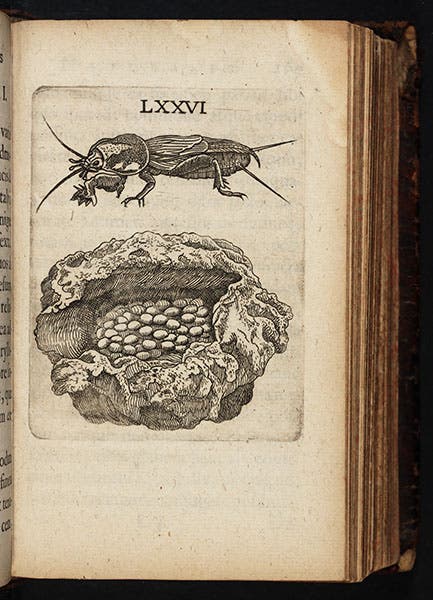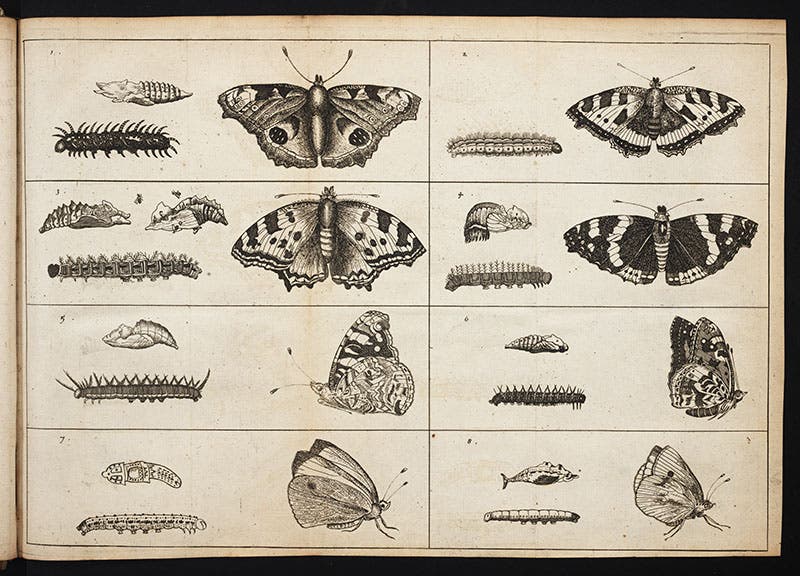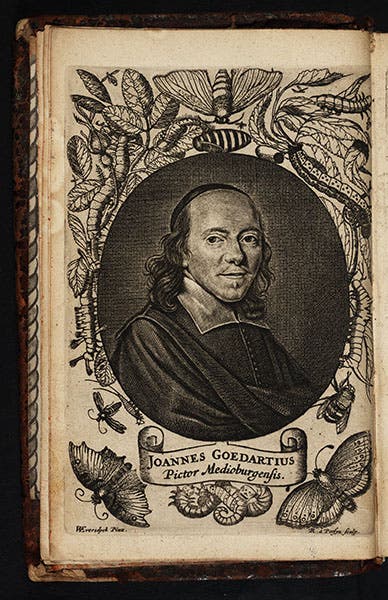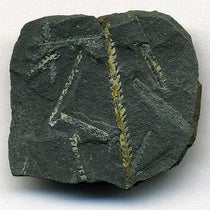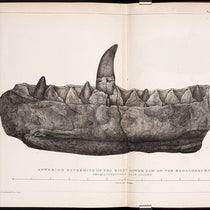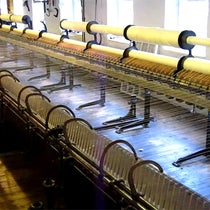Scientist of the Day - Johannes Goedaert
Johannes Goedaert, a Dutch naturalist and artist, was baptized Mar. 19, 1617; his date of birth is unknown. In 1660, Goedaert published the first of three volumes that would be collectively titled Metamorphosis et historia naturalis insectorum; the last volume would appear in 1669. This was not the first study devoted to insects – posthumously published Insectorum sive minimorum animalium theatrum (1634) had preceded it by almost thirty years. But Goedaert was the first to use etchings instead of woodcuts to illustrate his insects, and they are of noticeably higher quality than those in Moffet's volume. It certainly helped that Goedaert was an artist as well as a naturalist.
We show here a peacock butterfly, a red admiral, and a mole cricket, as well as the engraved title page of the Metamorphosis. It is apparent from the plates, and from the very title of the book, that Goedaert was especially interested in the transformation of insects from larva to pupa to imago.
In 1685, the Englishman Martin Lister put together a new edition of the Metamorphosis, adding notes of his own and changing the title to De insectis, but retaining the original illustrations. However, for this edition, many of the individual plates from the 1662-69 edition were combined into larger folding plates; we show the first of these, which includes our peacock and red admiral and six other butterflies (sixth image). We have both works in our History of Science Collection.
We do not know what Goedaert thought when, perhaps in 1666, he first got his hands on a copy of Robert Hooke’s Micrographia (1665), with its dramatically magnified fleas and mites. We know that Hooke was impressed with Goedaert, since he commented favorably on his work in the Micrographia. Goedaert had used magnifying glasses himself, but he preferred drawing insects at their natural size. Still, he might have realized, perusing Hooke, that the study of insects was about to undergo a radical metamorphosis of its own. It was a transformation he would not witness, as he died, possibly from the plague, in the first month of 1668, at the age of 50.
The portrait of Goedaert (seventh image) is the engraved frontispiece to the first volume of his Metamorphosis.
This essay was first posted in 2019. We have revised it in light of some very helpful comments offered by Kees Beaart, a Dutch scholar who curated an exhibition on Goedaert at the Zeeuws Museum in Middelburg in 2016-17. We appreciate his suggestions.
Dr. William B. Ashworth, Jr., Consultant for the History of Science, Linda Hall Library and Associate Professor emeritus, Department of History, University of Missouri-Kansas City. Comments or corrections are welcome; please direct to ashworthw@umkc.edu.

